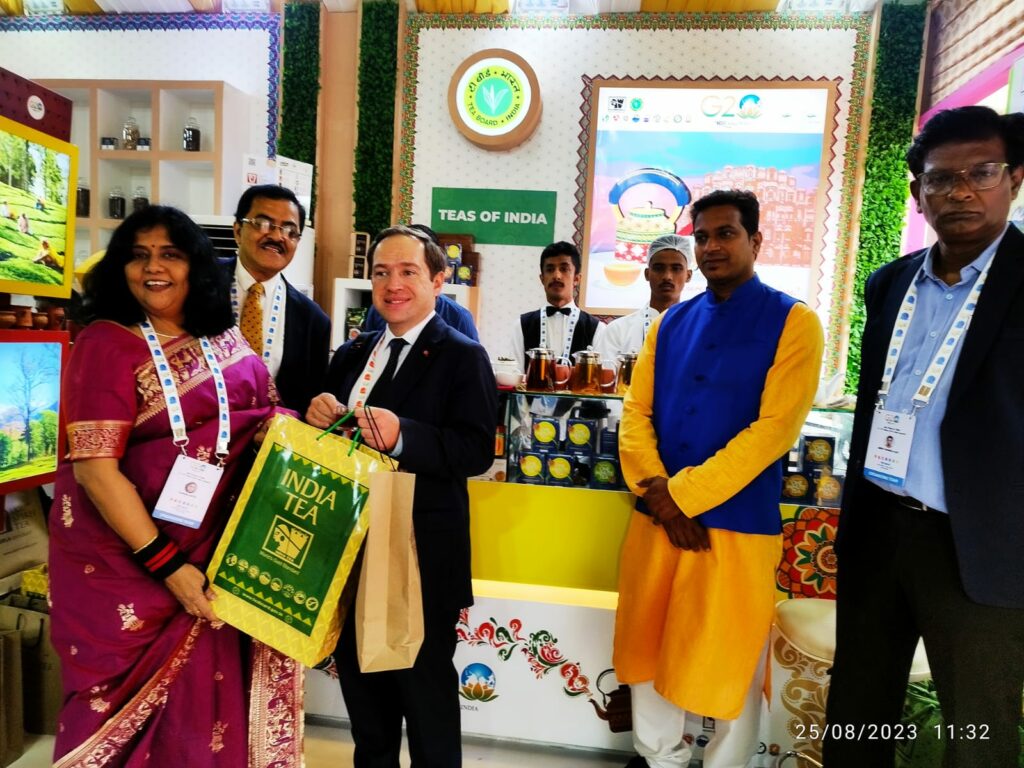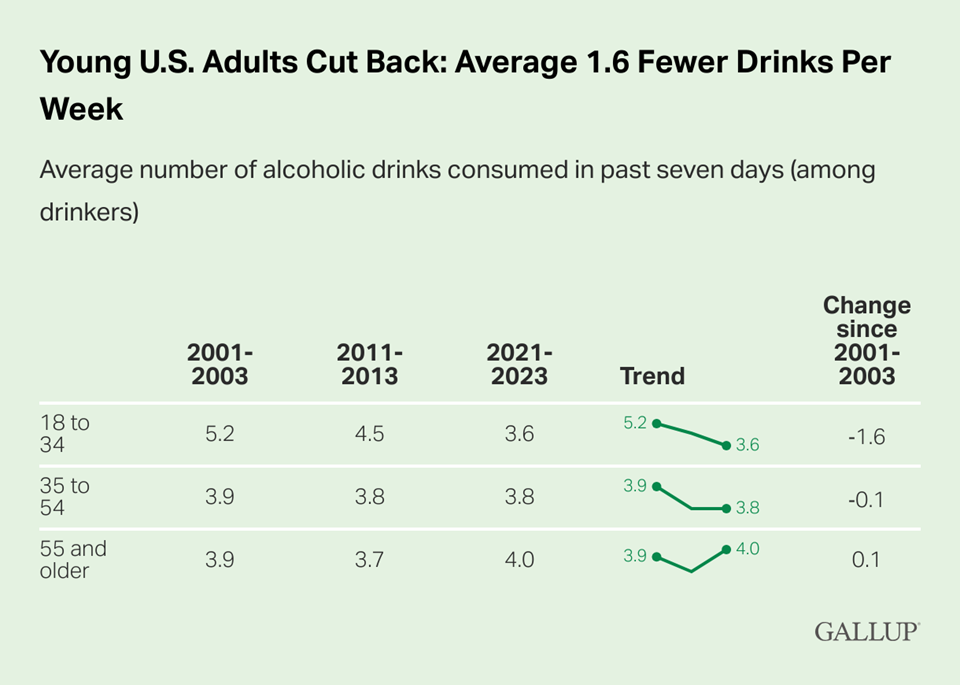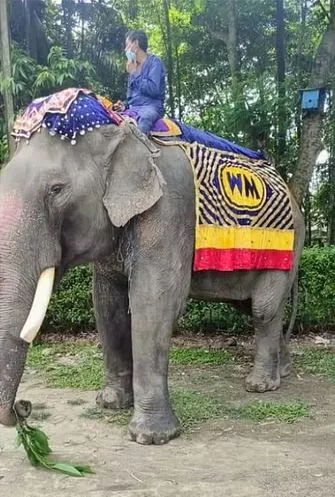Episode 131
Tea Board Weighs Auditor Concerns: Additional Resources Needed to Market Tea
| Overindulgence and High ABV Tea
| Tea Stalwart: India’s Oldest Captive Elephant Dies
Tea News for the week ending Aug 25
Powered by RedCircle
Featured Guest
Tea is intricately woven into India’s cultural tapestry. In its latest marketing campaign, Tata Tea Premium acknowledges and elevates several of the Indian state’s distinctive patterns in fabric and symbols of pride, drawing attention to the tea company’s extensive range of hyperlocal blends. Tata tells the story of extraordinary weavers by digitally enhancing their homespun artistry in an interactive tribute to handlooms. Aravinda Anantharaman reports on this eye-catching effort.
Listen to the Interview

Limited Resources Restrain Marketing Efforts by Tea Board
By Dan Bolton
A Parliamentary committee is reviewing concerns raised in a report by India’s auditor general that identified lapses in enforcing tea industry regulations by the Tea Board of India.
The Comptroller and Auditor General (CAG) audit, titled “The Role of Tea Board India in the Development of Tea in India,” reviewed board activities during a five-year period ending in fiscal 2022.
Auditors drew attention to these concerns:·
- The board’s inability to curb smuggled tea and tea untraceable to origin used for blending for sale in domestic markets.·
- The lack of a “well-defined strategy” to register growers (large and small). In March 2021, 38% of small growers were unregistered.·
- Failure to monitor tea processing facilities by conducting timely inspections and laboratory testing.·
- Lack of a database to track yield per hectare, labor productivity, new plantings, aging tree stock, and distribution of cultivars.
- In addition, a mandate to auction 50% of the country’s tea was not enforced. Auditors found that most registered buyers did not purchase tea at auction.
The CAG audit brings to the forefront a discussion of the importance of supporting small tea growers (STG) and bought-leaf factories that now supply most of the country’s tea.
In a press release shared with the media, the board writes that “in line with the Government’s added focus on the development of the small growers’ sector, the tea board has been making sustained efforts to bring the STG sector into the mainstream value chain through collectivization, innovation in products, better packaging, and incisive marketing.”
“This endeavor has aligned with the fact that the STG sector now accounts for 52% of tea production of 1,375 million kg during 2022-23.” The board listed its many regulatory responsibilities and noted that “being a state-run body, can’t act on the contrary,” reads the release.
The Board acknowledges that the views given by the industry veterans conform with the central government’s renewed focus on “ease of doing business” and “marketing.”
By emphasizing “marketing” domestically and globally, the Tea Board “strives to enhance per capita consumption in India and increase import shares in the major export destinations in the face of wholly export-oriented producers such as Kenya and Sri Lanka,” reads the release.
BIZ INSIGHT – The audit is welcome as it brings to the front burner the critical need for additional resources for the Tea Board of India to market and promote its tea. Regulations such as inspection and laboratory testing of factories are essential. Compiling statistics and making them readily available to the industry is essential. Cooperating with law enforcement is expected, but are tea board employees suited to halt smugglers? Should the board intervene to force buyers and sellers to auction half their tea?
India’s Trustea Code rests on a foundation of legal requirements, but in contrast to the work of the Tea Board, participation is voluntary. There is a reason 65% of India’s tea producers adhere to the code. It promotes safe operations and continuous quality improvement, but 100% compliance is unrealistic. The cost of forcing compliance is wasted. The market rewards compliance with carrots. Regulators wield only a stick.
See: Trustea Celebrates 10th Anniversary

Overindulgence and High ABV Tea
By Dan Bolton
Three in five Americans (62%) drink beverage alcohol, and one in five US drinkers admit to imbibing too much, continuing a three-decade decline in overindulgence, according to Gallup Polling.
Since 1978, Gallup has asked adults, “Do you sometimes drink more alcoholic beverages than you think you should?” While the percentage of drinkers overall has held steady, averaging 63% since 1939, Gallup reports a decline in those who responded yes to overindulging from a high of 35% in 1989, falling to 19% in 2023. Overindulgence averaged 18% during the first three years of the pandemic.

“When the 13% of nondrinkers who say they don’t drink because of past problems with alcohol are combined with the 19% of drinkers who report drinking more than they should sometimes, the result suggests a population rate of 16% of U.S. adults who may currently struggle with alcohol abuse or did so in the past,” Gallup reports in its most recent Consumption Habits poll, conducted July 3-27.
Men are more likely to overindulge than women (21% vs. 16%), and younger adults are more likely to overindulge than adults 35 and older. Adults with household incomes of at least $100,000 are more than twice as likely to overindulge as those earning under $40,000 a year, of whom only 10% say they occasionally drink too much.
BIZ INSIGHT – Beer remains the most popular alcoholic beverage in America, preferred by 37% of alcohol drinkers. The category includes spiked teas, which are seeing a strong increase in popularity. Hard teas lead sales in the fermented malt beverages category for the first time. FMBs include hard lemonade, ciders, and similar sweet, beer-like beverages that don’t taste like beer. Thirty years ago, liquor was the drink of choice for 20% of respondents. In the past few years, that average has risen to 30% of those responding to the Gallup survey. In 2023, the total increased to 31%, an all-time high.
India’s Oldest Captive Elephant Dies at 89
Tusker Bijuli Prasad, the oldest elephant in captivity in India, passed this week at 89. Taken from the wild in the 1940s, the young bull elephant spent most of his life clearing forested land and deftly pulling spent tea bushes from the soil.

Bijuli passed on 22nd August at the Behali Tea Estate in Assam, where he lived. Bijuli was said to have been rescued from the wild in the 1940s. He was unusually strong and once fought off poachers seeking his tusks.
He was sold to the Williamson Magor company in Assam and was named by Philip Magor himself. Bijuli Prada became a working elephant in the Borgang Tea Estate in the Sonitpur district in Assam and worked there from the 1950s until he retired in 2018. He was a big part of the company, so much so that McLeod Russel, part of the Williamson Magor group, adopted an elephant as the logo. Elephants rarely live beyond 80 years. After retirement, Bijuli lost his teeth and had to be fed a boiled mash of rice and soybean by handlers.
– Aravinda Anantharaman
FEATURE

India’s Vivid Handloom Legacy
By Aravinda Anantharaman
Tata’s latest TV campaign for its premium line of teas features a celebrated singer at the heart of great campaigns that evoke nationalistic pride and emotion, which ties in with what Chai means to people across the country. And that’s not all. The brand also launched one of the largest 3D LED anamorphic auto activations ever seen in the country in time for Independence Day at the DLF Cyber City Mall in Gurugram. Tata’s Desh Ke Dhaage campaign, celebrating India’s vivid handloom legacy, pushes creative boundaries to bring the consumer an experience that will visually delight and establish powerful connections.
Listen to the Interview
Powered by RedCircle
Share this episode with your friends in tea.
Sign up to receive Tea Biz weekly in your inbox.

